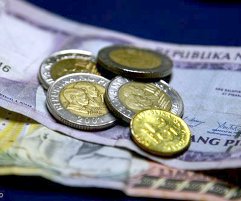The Predictive Income Level Of An I-Café
 Were you surprised at the amount you have to pay your local government for your business tax? Is it a lot more than what you paid last year? Did they use your declared income as the tax base for what you will pay as local tax?
Were you surprised at the amount you have to pay your local government for your business tax? Is it a lot more than what you paid last year? Did they use your declared income as the tax base for what you will pay as local tax?
As i-café owners, at this period of renewal of business permits, you are assessed of the local tax for the gross revenues you earned last year. In the application form that you filled-up, there are blank spaces were you have to state your gross income in the past year plus the number of PC units you have to earn such amount.
I hate to say this, but more often than not, businessmen (i-café owners included) tend to underdeclare their gross income in order to have lower taxes to pay.
In cases like the above, the local government unit has to ignore your stated income and instead use the so-called predictive income level (PIL) of the business or industry of the taxpayer. For i-cafe owners, they use a PIL based on per PC per day multiplied by number of days in a year.
For example, if you have fifteen (15) units of PCs in your i-café and the PIL that an LGU uses is one hundred (P100.00), your tax base will be 15 PCs x P100/PC/day x 360 days or P540,000. Get two (2%) percent of the amount and you get the local tax that you have to pay (P10,800 in this example).
LGUs use different PILs and percentages for local tax of i-cafés in their areas. I know of an LGU who uses a high PIL of P150/PC/day while most towns and cities use P100/PC/day only. The factor of 360 productive days in a year is also very much a subject of discussion. We know for a fact that cafes experience power brownouts, internet disconnections and computer breakdowns so the 360 figure is unreasonable.
If you ask me, a P100/PC/day (inclusive of income on rental and other services) and 300 productive days in a year are the reasonable figures to use.




In my opinion, the P100/PC/day is too high. Even at P20/hr, all your PCs must be occupied at least 5 hours a day to get a sales of P100 per PC. I don’t think that’s very realistic with or without competition. PILs are assuming that computer shops have customers all the time.
PILs could be used if you don’t show a valid proof of income. But if you have proof of income like sales declared to the BIR, the LGUs should use that instead. It is not reasonable to expect that computer shops will earn year on year. If big banks and automakers can fail, how much more small computer shops?
The P100/PC/day PIL of a café is not for income on PC rent only. The last sentence on my blog specifically states that it is inclusive of income on rental and other services.
Yes, an LGU has to use a tax base not using PIL if the taxpayer has proof or record of his income. Sales declared to BIR is one of them. A print-out of PC timer’s revenue record is another.
do they use this PIL in all LGU? I wasnt able to get it. Does it mean you have no choice but to just let the LGU use this instead of other proof like proof of income in determning your biz income?